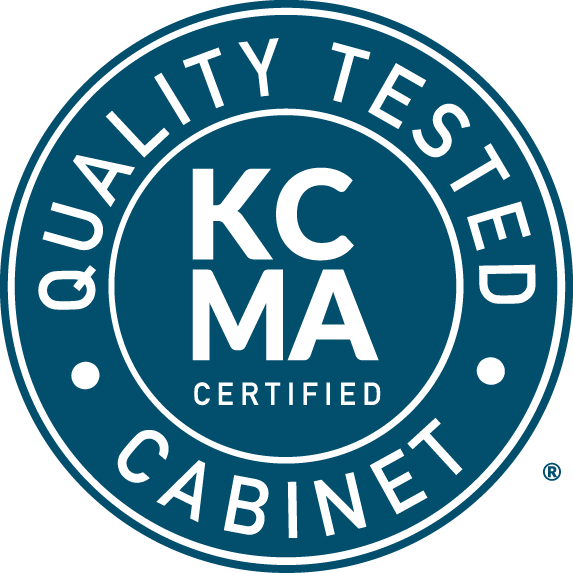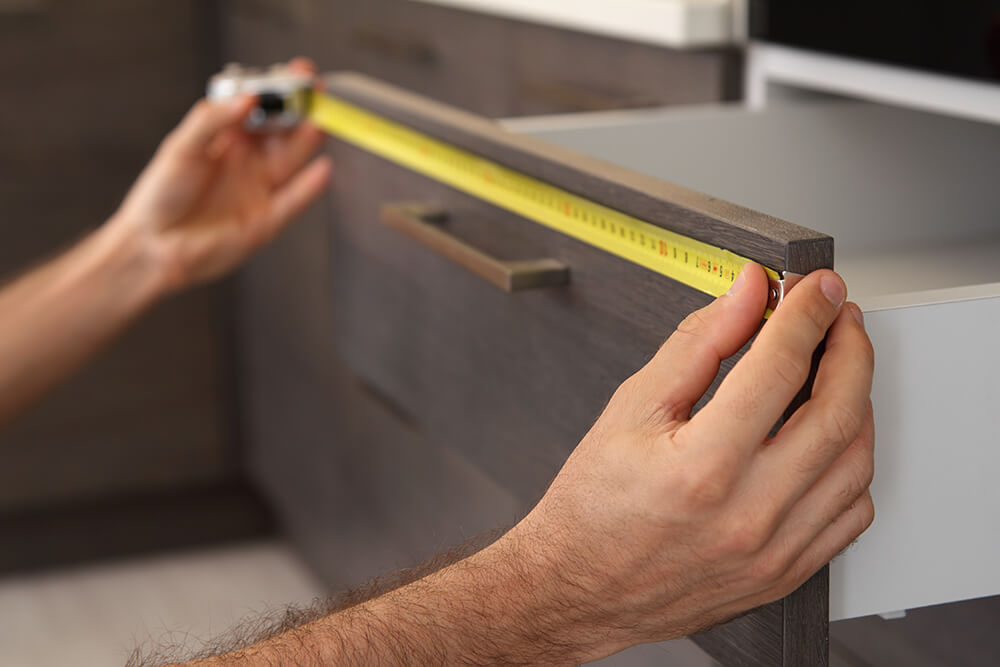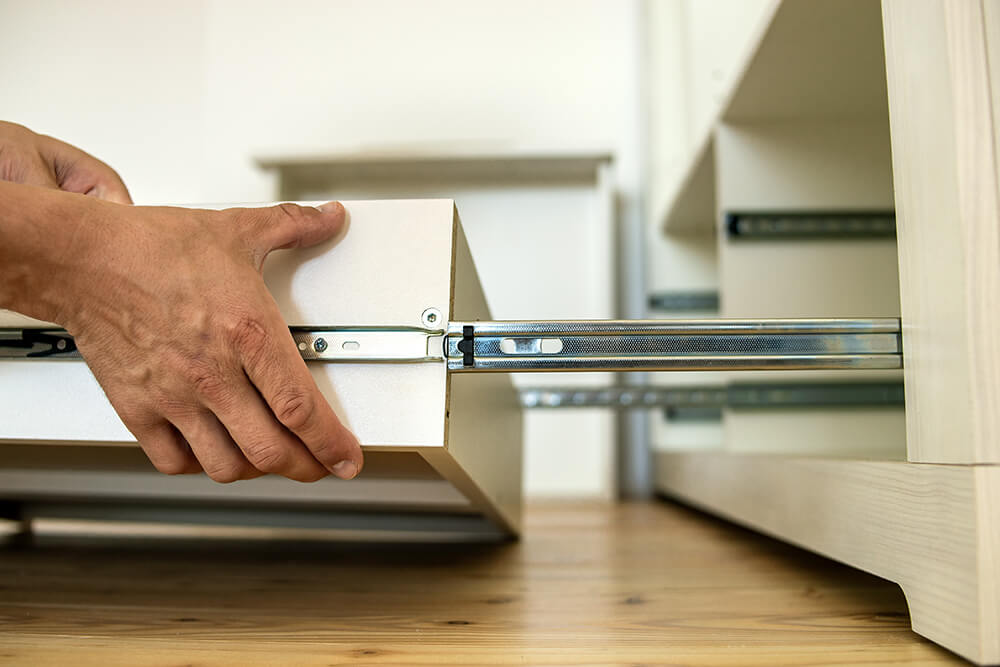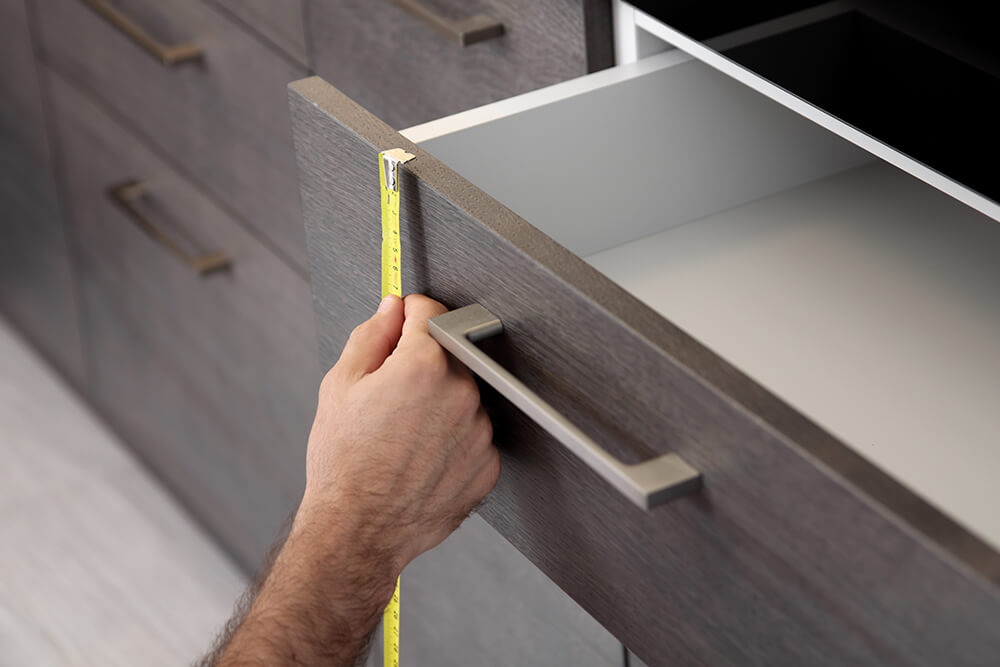
In today's competitive marketplace, it is often difficult for multifamily designer or builder to differentiate between various cabinets and to ascertain the level of quality and durability one cabinet has over another. Having the KCMA A161.1 Quality Certification Seal makes it easier for a multifamily designer or builder to feel comfortable with their cabinet selections.
Republic Elite complies with the KCMA A161.1 Quality Certification process.
Our cabinets are subjected to the following tests:
5 Structural Tests
These tests are meant to verify the structural integrity and strength of cabinets
- All shelves and bottoms are loaded at 15 pounds per square foot, and loading is maintained for seven days to ensure that there is no excessive deflection and no visible sing of join separation or failure of any part of the cabinets or the mounting system.
- Mounted wall cabinets are gradually loaded to 600 pounds without any visible sign of failure in the cabinet or the mounting system.
- To test the strength of base-front joints, a load of 250 pounds is applied against the inside of cabinet-front stiles for cabinet with drawer rails, or 200 pounds is applied for cabinets without drawer rails, to ensure reliable front joints that will not open during stress in service or during installation.
- To test the ability of shelves, bottoms, and drawer bottoms to withstand the dropping of cans and other items, a three-pound steel ball is dropped from six inches above the surface. After the test the drawer must not be damaged and must operate as before the test with no visible sign of joint separation or failure of any part of the cabinet or mounting system.
- To test the ability of cabinet doors and connections to withstand impacts such as children falling against a cabinet, a 10-pound sandbag is used to strike the center of a closed cabinet door and repeated with the door opened to a 45-degree angle. The door must operate as before the test and show no damage or sign of separation or failure in the system.

2 Drawer Tests
- To test the ability of drawers and drawer mechanisms to operate with loading during normal use, drawers are loaded at 15 pounds per square foot and operated through 25,000 cycles. The drawers must then remain operable with no failure in any part of the drawer assembly or operating system, and drawer bottoms must not be deflected to interfere with drawer operation.
- To test the ability of the drawer-front assembly to withstand the impact of closing the drawer under normal use, a three-pound weight is dropped 8 inches against the drawer assembly. After 10 drops, there must be no evidence of looseness or structural damage to the drawer-front assembly that impairs operation.

2 Door Operation Tests
- To test the ability of doors, hinges and means of attachment to withstand loading, 65 pounds of weight is applied on the door. The weighted door is slowly operated for 10 cycles from 90 degrees open to 20 degrees open and returned to the 90-degree position. The door must remain weighted for 10 minutes, after which the door and hinges must show no visible signs of damage, and connections between cabinet-and-hinge and door-and-hinge must show no sign of looseness.
- To test the ability of doors, door-holding devices, hinges, and attachment devices to operate under the stress of normal use, doors are opened and closed through a full 90-degree swing for 25,000 cycles. At the test’s conclusion, the door must be operable, the door-holding device must hold the door in the closed position, hinges must show no visible signs of damage, connections between cabinet-and-hinge and door-and-hinge must show no sign of looseness, and other specifications must be met.

4 Finish Tests
These tests create, in accelerated form, the cumulative effects of years of normal kitchen conditions of pre-finished cabinets. Cabinet finishes are inspected to ensure that stringent standards of appearance are also met.
- To test the ability of the finish to withstand high heat, a cabinet door is placed in a hotbox at 120 degrees Fahrenheit and 70 percent relative humidity for 24 hours. After this test the finish must show no appreciable discoloration and no evidence of blistering, checks or other film failures.
- To test the ability of the finish to withstand hot and cold cycles for prolonged periods, a cabinet door is placed in a hotbox at 120 degrees Fahrenheit and 70 percent relative humidity for one hour, removed and allowed to return to room temperature and humidity conditions, and then placed in a cold box for one hour at -5 degrees Fahrenheit. The cycle is repeated five times. The finish must then show no appreciable discoloration and no evidence of blistering, cold checking, or other film failure.
- To test the ability of the finish to withstand substances typically found in the kitchen and bath, exterior exposed surfaces of doors, front frames, drawer fronts and end panels are subjected to vinegar, lemon, orange and grape juices, tomato ketchup, coffee, olive oil and 100-proof alcohol for 24 hours and to mustard for one hour. After this test, the finish must show no appreciable discoloration, stain or whitening that will not disperse with ordinary polishing and no indication of blistering, checks or other film failure.
- To test the ability of the finish to withstand long periods of exposure to a detergent and water solution, a cabinet door edge is subjected to exposure to a standardized detergent formula for 24 hours. The door edge must then show no delamination or swelling and no appreciable discoloration or evidence of blistering, checking, whitening, or other film failure.
Adapted from KCMA.org



